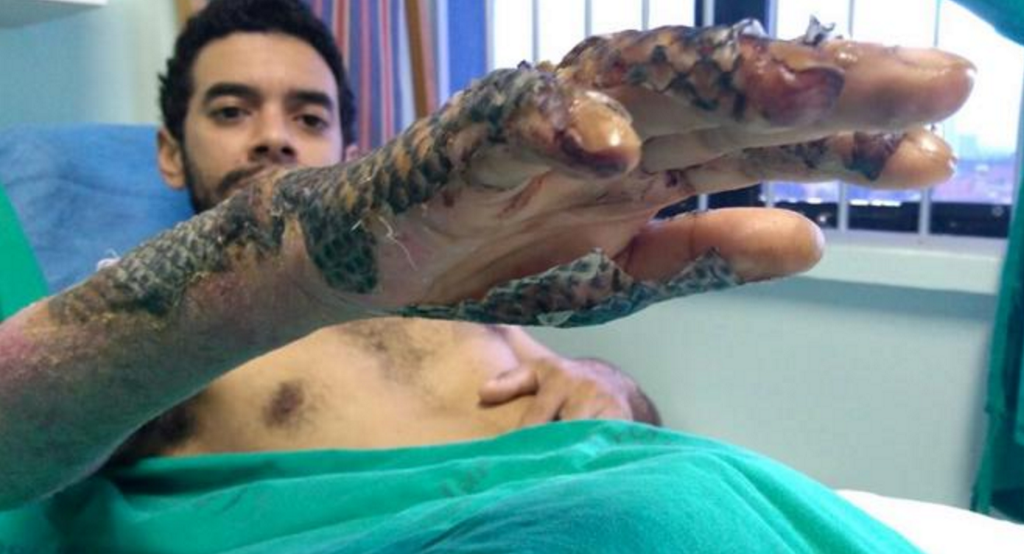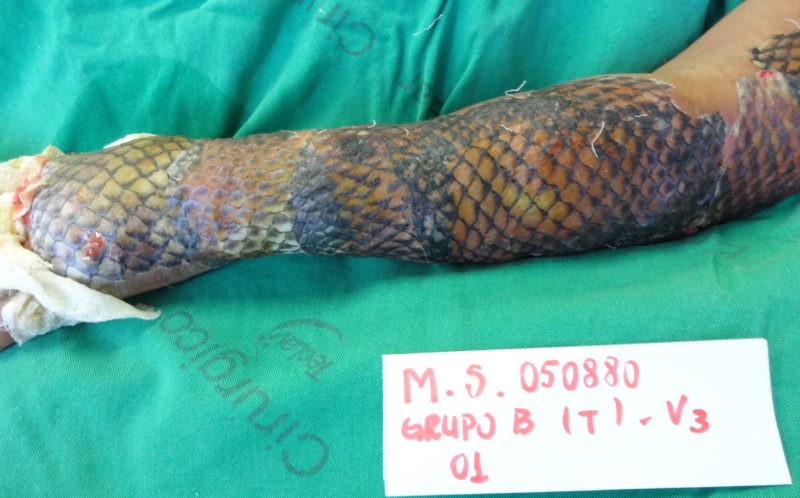Fish Skin Heals Burns

A Brazilian doctor is spearheading this unusual new treatment.
Burns are some of the most horrific wounds doctors deal with. The World Health Organization estimates that around 265,000 people die every year from these injuries.
Survivors often struggle with unimaginable pain, but one plastic surgeon thinks the answer might be in the ocean.
Dr. Edmar Maciel is currently leading a study at José Frota Institute in Fortaleza, Brazil, that uses tilapia skin to improve the burn healing process.

In the US, burn victims generally receive skin replacements in the form of human skin, pig skin or manmade coverings. However, according to news organization STAT, Brazilian skin banks only have enough of these to provide them to 1% of patients.
Burnt areas of the body left open to the elements are prone to infection, and past treatments consisted of gauze and a special cream. While this does avoid contamination, the bandages need to be changed every day. This means literally ripping the gauze off of a burn wound, which is excruciatingly painful.
Tilapia skin, on the other hand, doesn’t need to be changed daily. In fact, it actually locks in moisture and proteins that allow the wound to heal faster, enabling doctors to leave these coverings on for nine to 11 days.
As of this writing, Dr. Maciel and his team have treated 52 burn patients with tilapia skin, and none have developed any sort of complications.
Of course, doctors can’t simply skin a tilapia and slap the scales on their patients. The skin first needs to be dunked in chlorhexidine, which is an antiseptic, after which it’s given a bath in glycerol. Finally, it needs to receive radiosterilization to officially cleanse it of any contamination.
Although these extra steps may make the use of tilapia skin unreasonable in countries like the US, this could be a major improvement for Brazil and other nations that lack skin banks. Fishermen view tilapia skin as a waste product, which makes it an incredibly cheap commodity. Doctors can use it up to two years after it’s been sterilized, so it has quite the shelf life.
